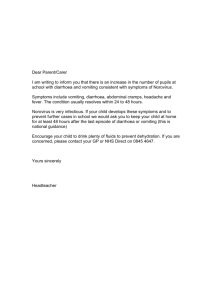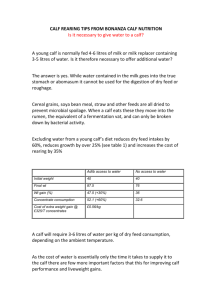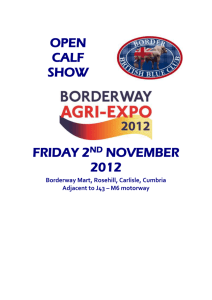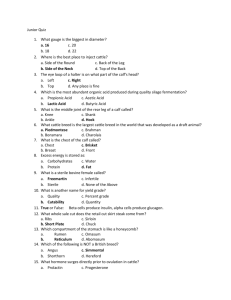Pestivirus – Mucosal disease – Bovine viral diarrhoea
advertisement
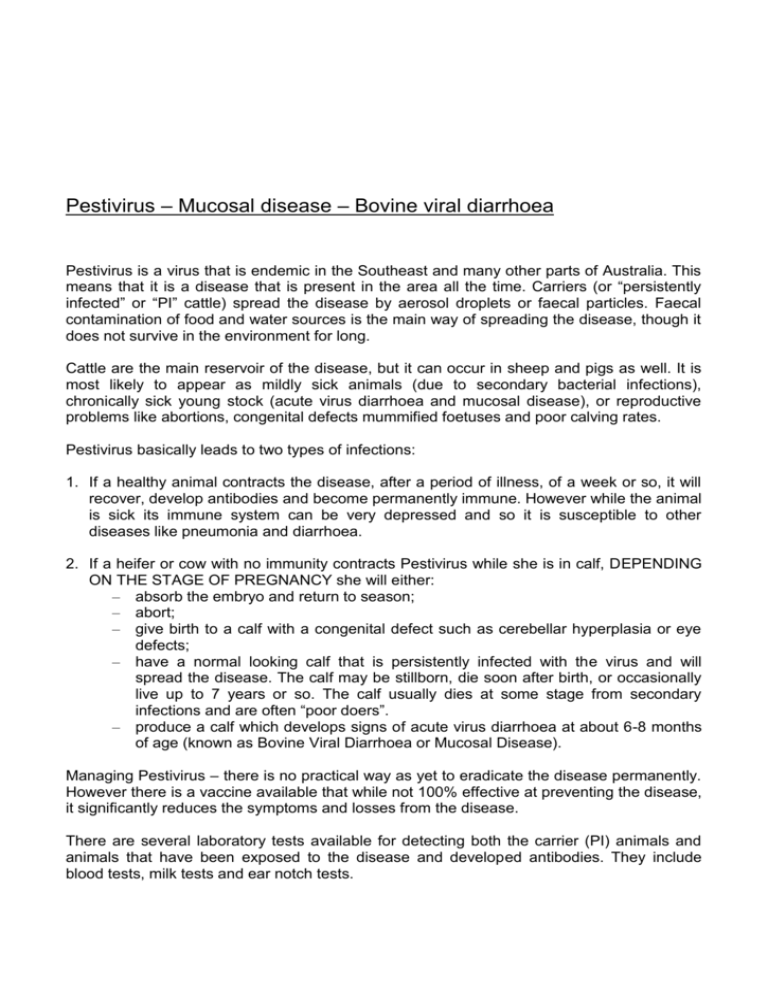
Pestivirus – Mucosal disease – Bovine viral diarrhoea Pestivirus is a virus that is endemic in the Southeast and many other parts of Australia. This means that it is a disease that is present in the area all the time. Carriers (or “persistently infected” or “PI” cattle) spread the disease by aerosol droplets or faecal particles. Faecal contamination of food and water sources is the main way of spreading the disease, though it does not survive in the environment for long. Cattle are the main reservoir of the disease, but it can occur in sheep and pigs as well. It is most likely to appear as mildly sick animals (due to secondary bacterial infections), chronically sick young stock (acute virus diarrhoea and mucosal disease), or reproductive problems like abortions, congenital defects mummified foetuses and poor calving rates. Pestivirus basically leads to two types of infections: 1. If a healthy animal contracts the disease, after a period of illness, of a week or so, it will recover, develop antibodies and become permanently immune. However while the animal is sick its immune system can be very depressed and so it is susceptible to other diseases like pneumonia and diarrhoea. 2. If a heifer or cow with no immunity contracts Pestivirus while she is in calf, DEPENDING ON THE STAGE OF PREGNANCY she will either: – absorb the embryo and return to season; – abort; – give birth to a calf with a congenital defect such as cerebellar hyperplasia or eye defects; – have a normal looking calf that is persistently infected with the virus and will spread the disease. The calf may be stillborn, die soon after birth, or occasionally live up to 7 years or so. The calf usually dies at some stage from secondary infections and are often “poor doers”. – produce a calf which develops signs of acute virus diarrhoea at about 6-8 months of age (known as Bovine Viral Diarrhoea or Mucosal Disease). Managing Pestivirus – there is no practical way as yet to eradicate the disease permanently. However there is a vaccine available that while not 100% effective at preventing the disease, it significantly reduces the symptoms and losses from the disease. There are several laboratory tests available for detecting both the carrier (PI) animals and animals that have been exposed to the disease and developed antibodies. They include blood tests, milk tests and ear notch tests. Recommendations on how to manage this disease vary according to individual circumstances and is best discussed in consultation with your vet. A common example is to identify the PI animals through either a blood or ear notch test so they may be culled, and to start a vaccination program at least for the breeder heifers and cows. The vaccine requires two doses initially, with the last dose being about 2 weeks prior to joining. It must then be repeated annually, just before joining. There is some evidence that there may be benefit in vaccinating turn-off steers and heifers so as to reduce the incidence of pneumonia and other diseases seen at times of stress such as weaning, trucking, and feedlotting. They can be marketing advantages in advertising cattle as “Pestivirus vaccinated”. There is no curative treatment available for PI cattle other than supportive treatment to prevent secondary infections. They are best identified and culled.




